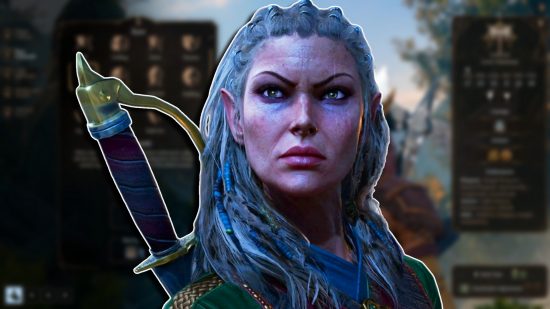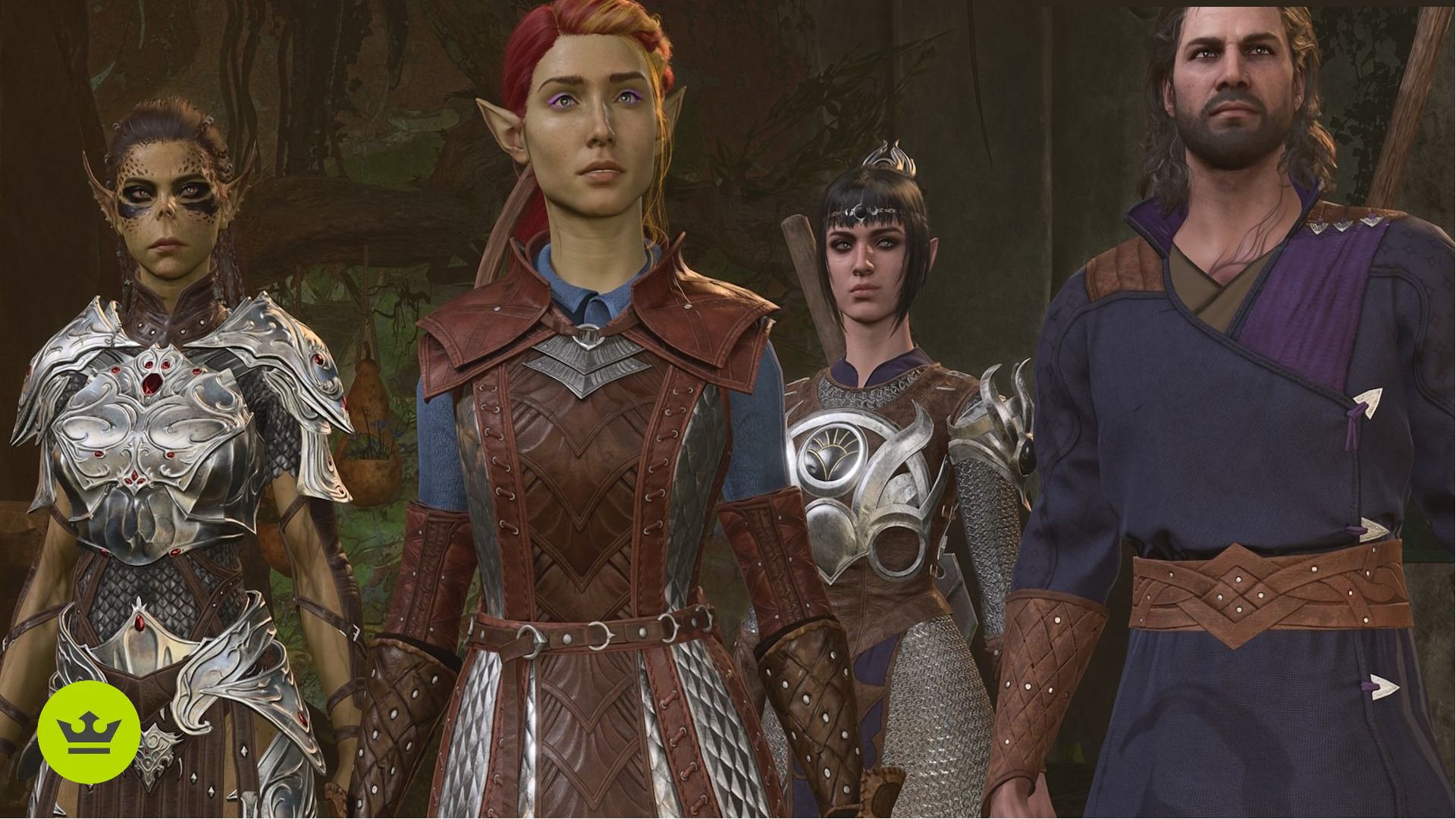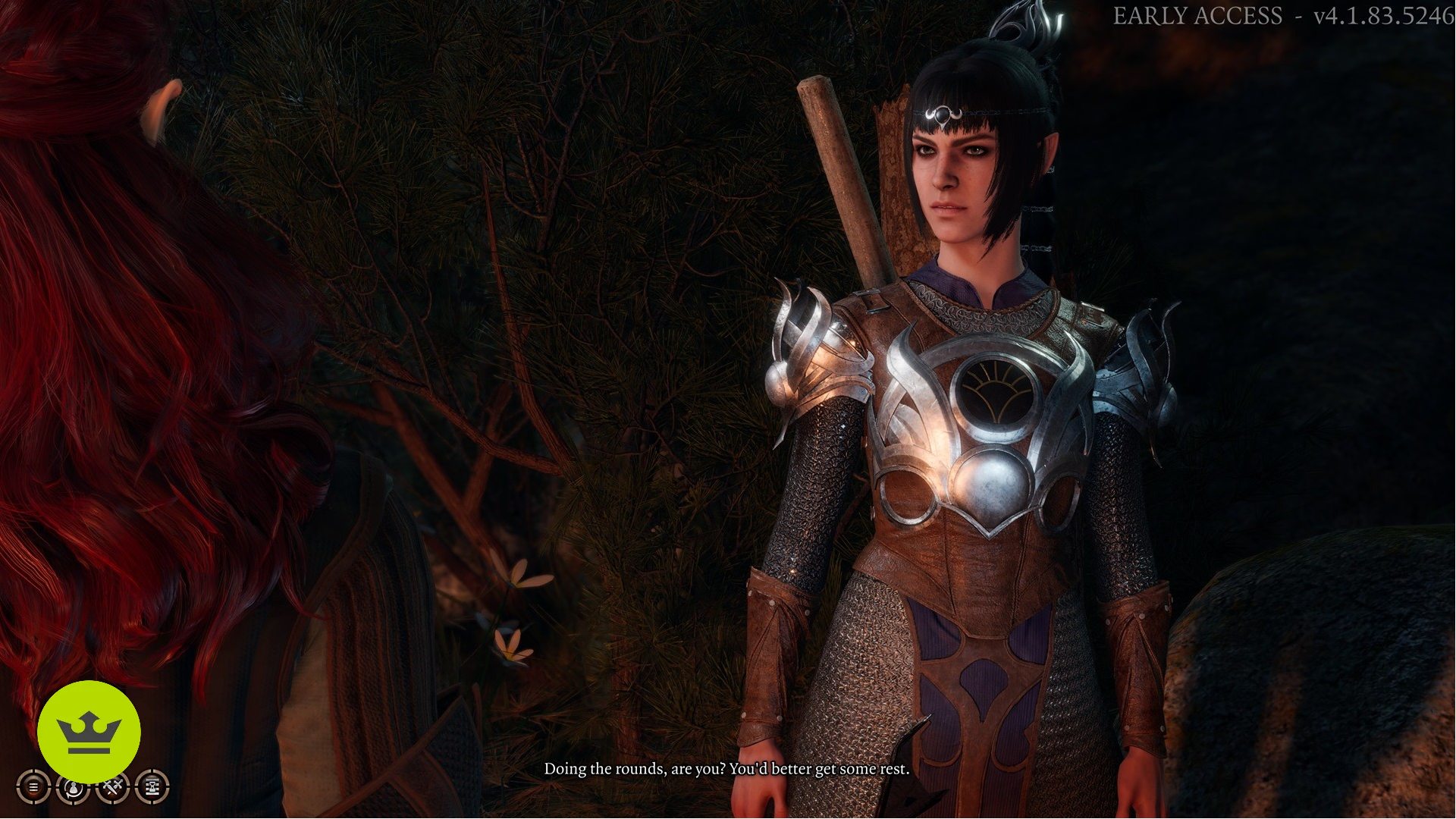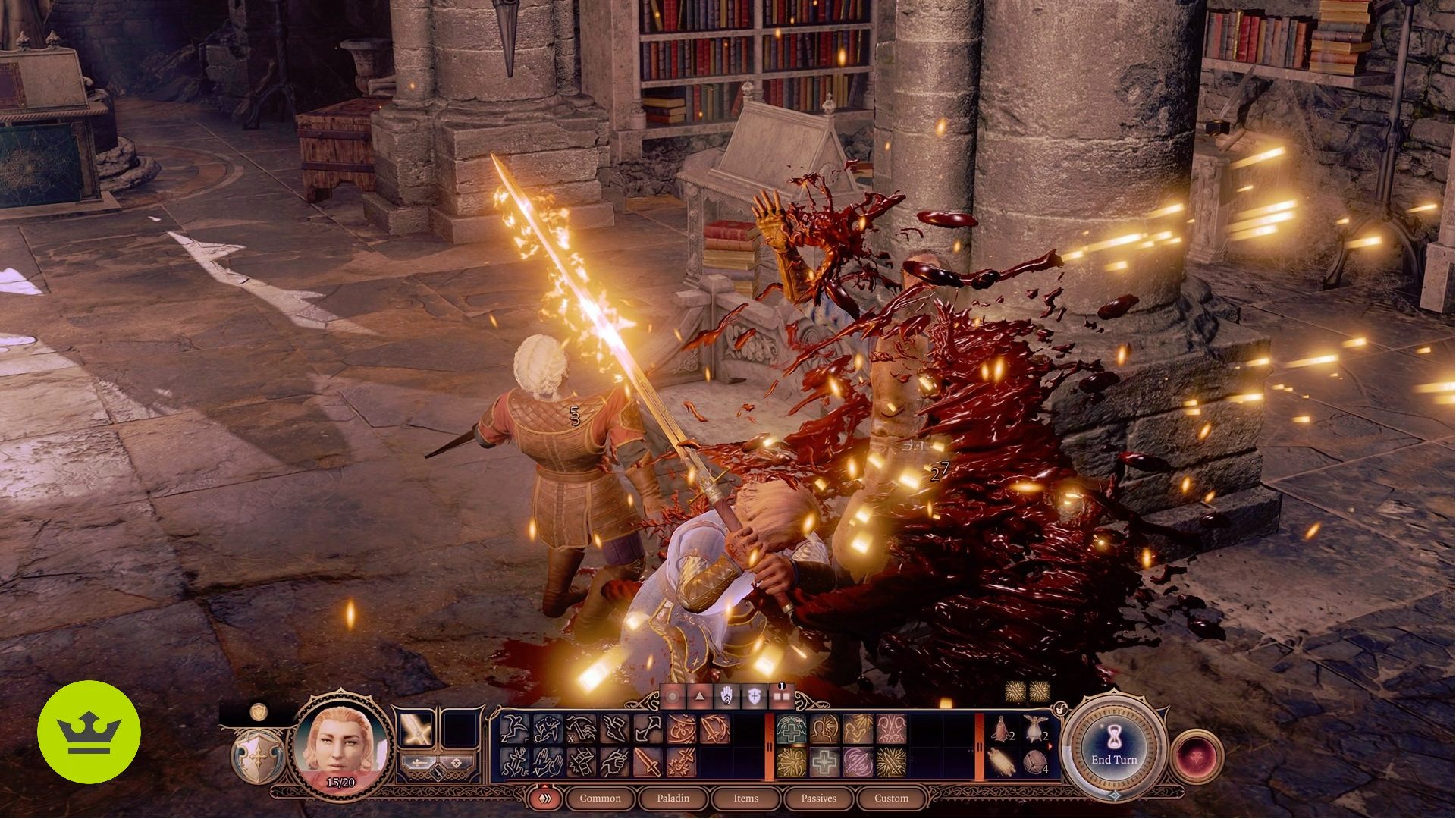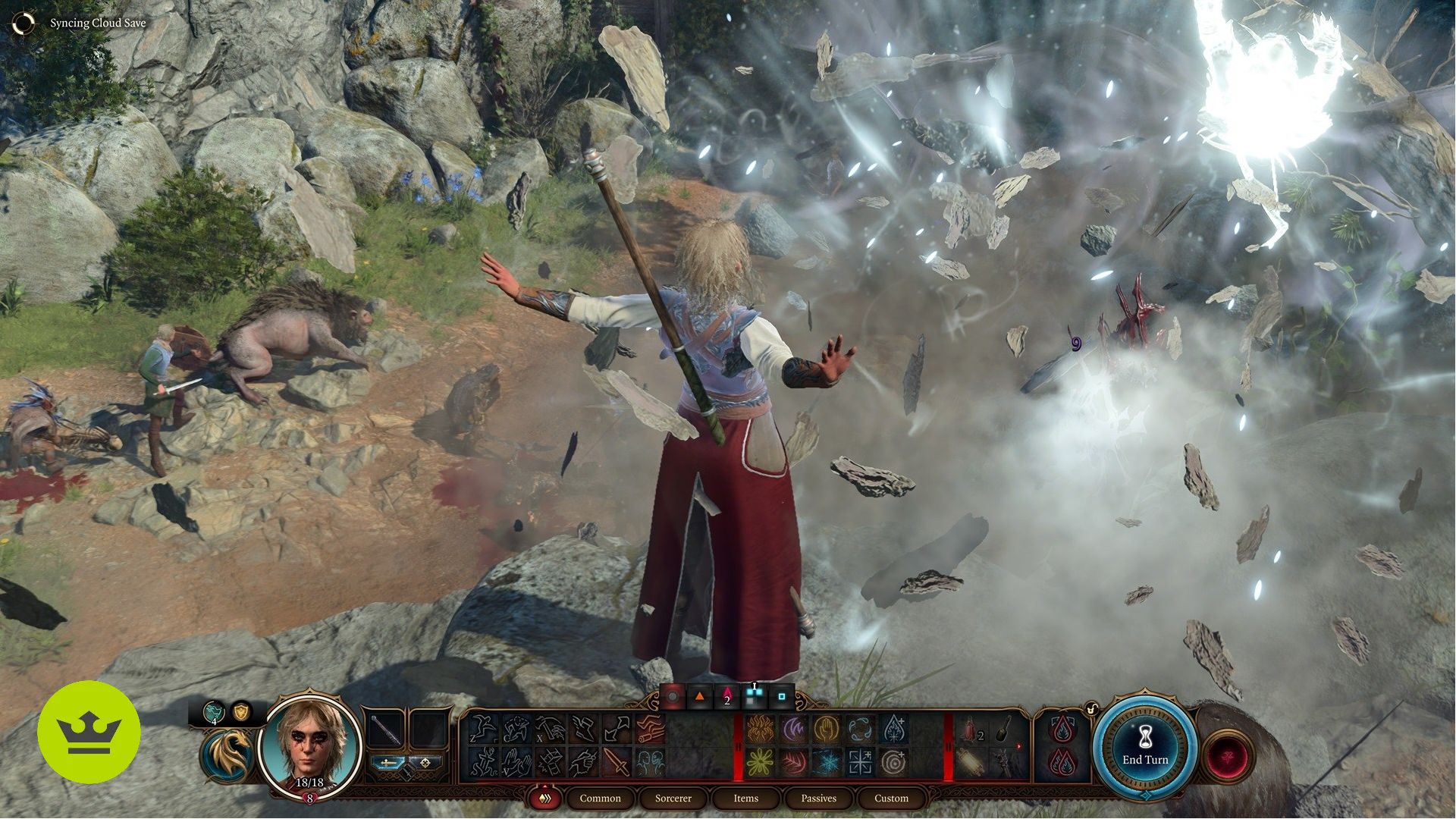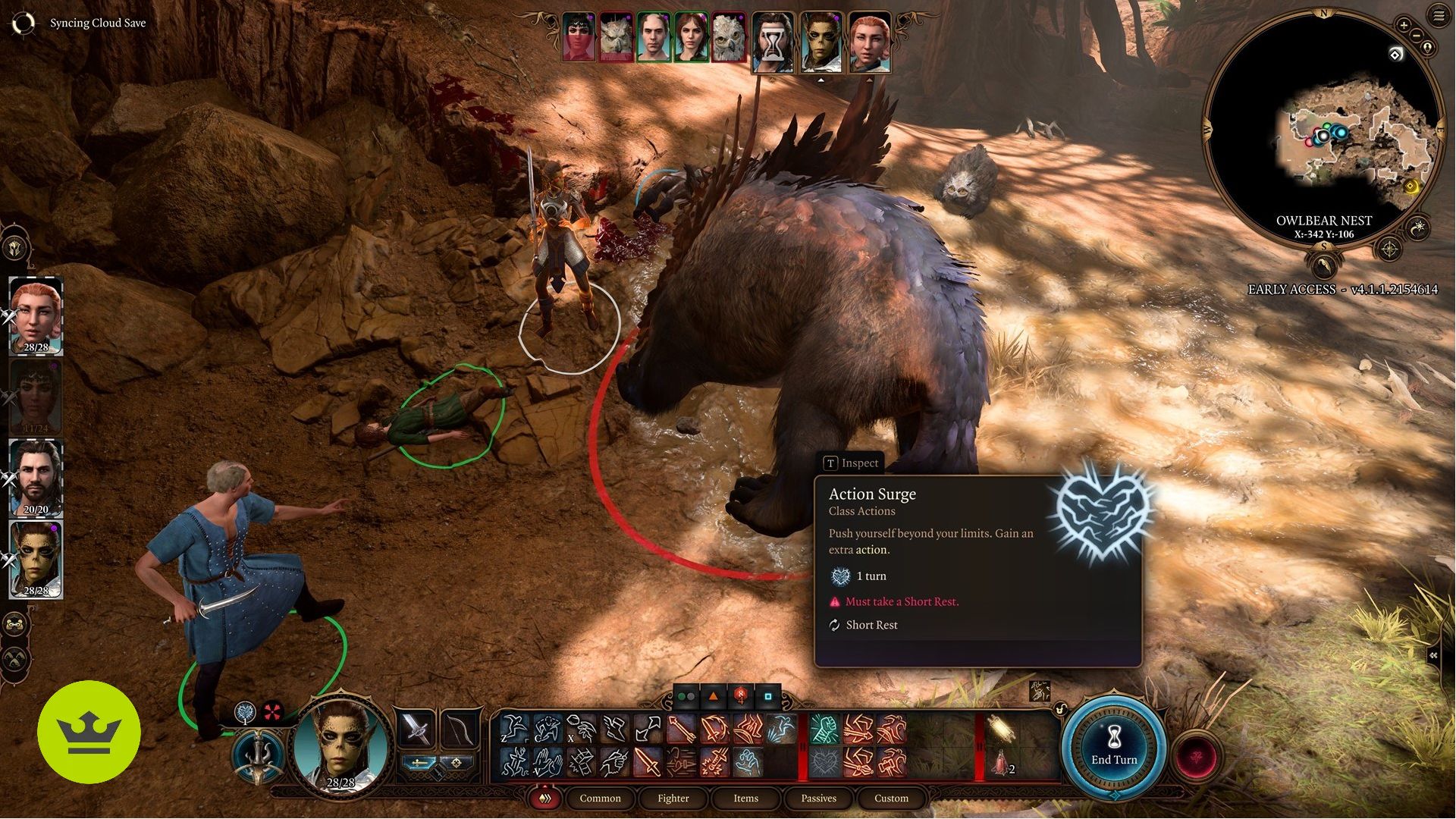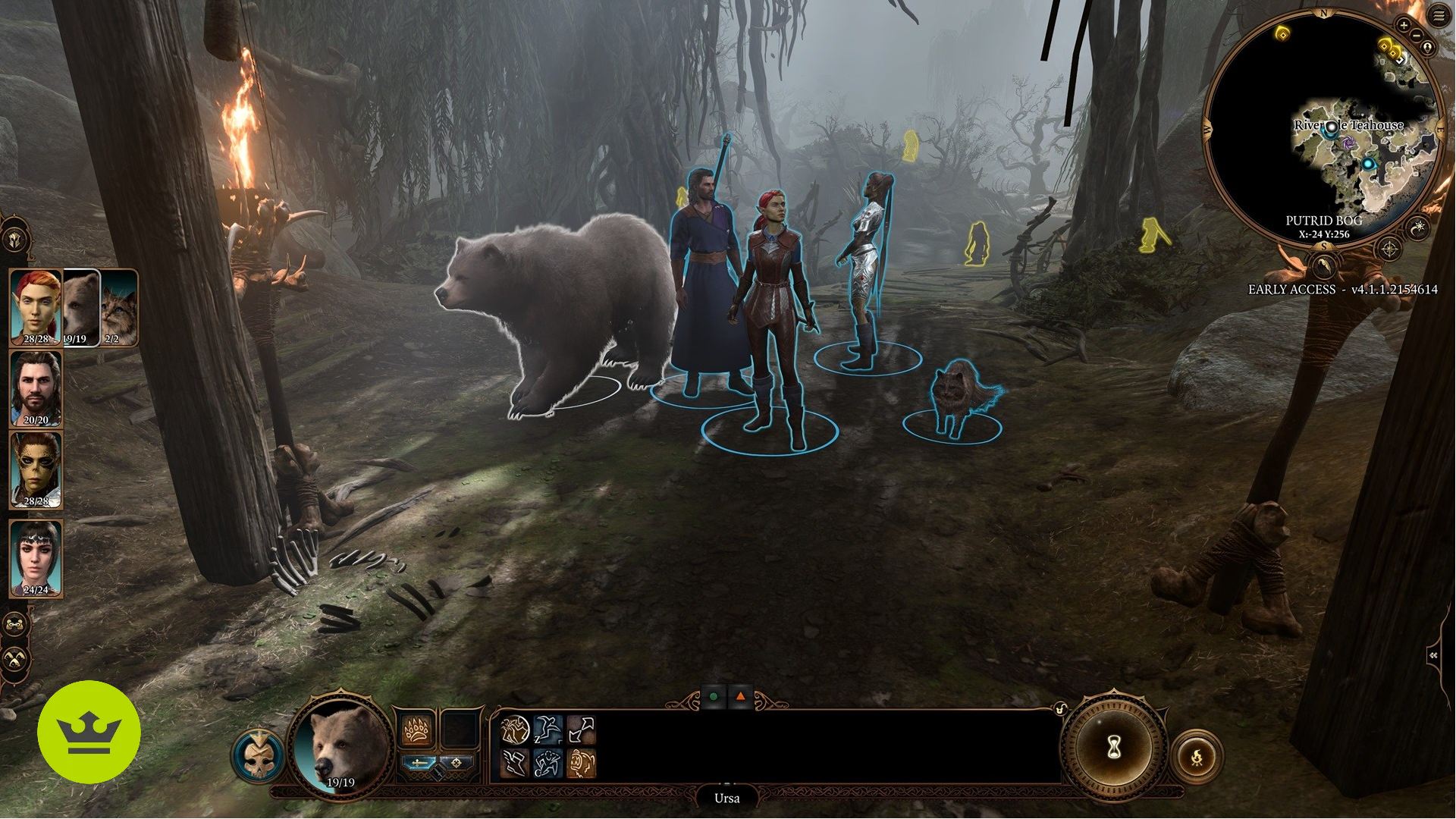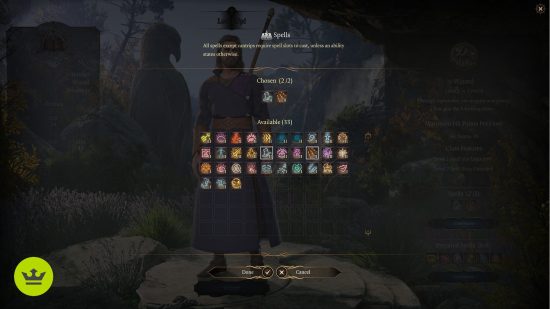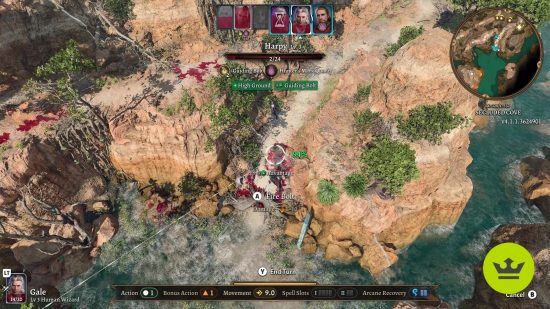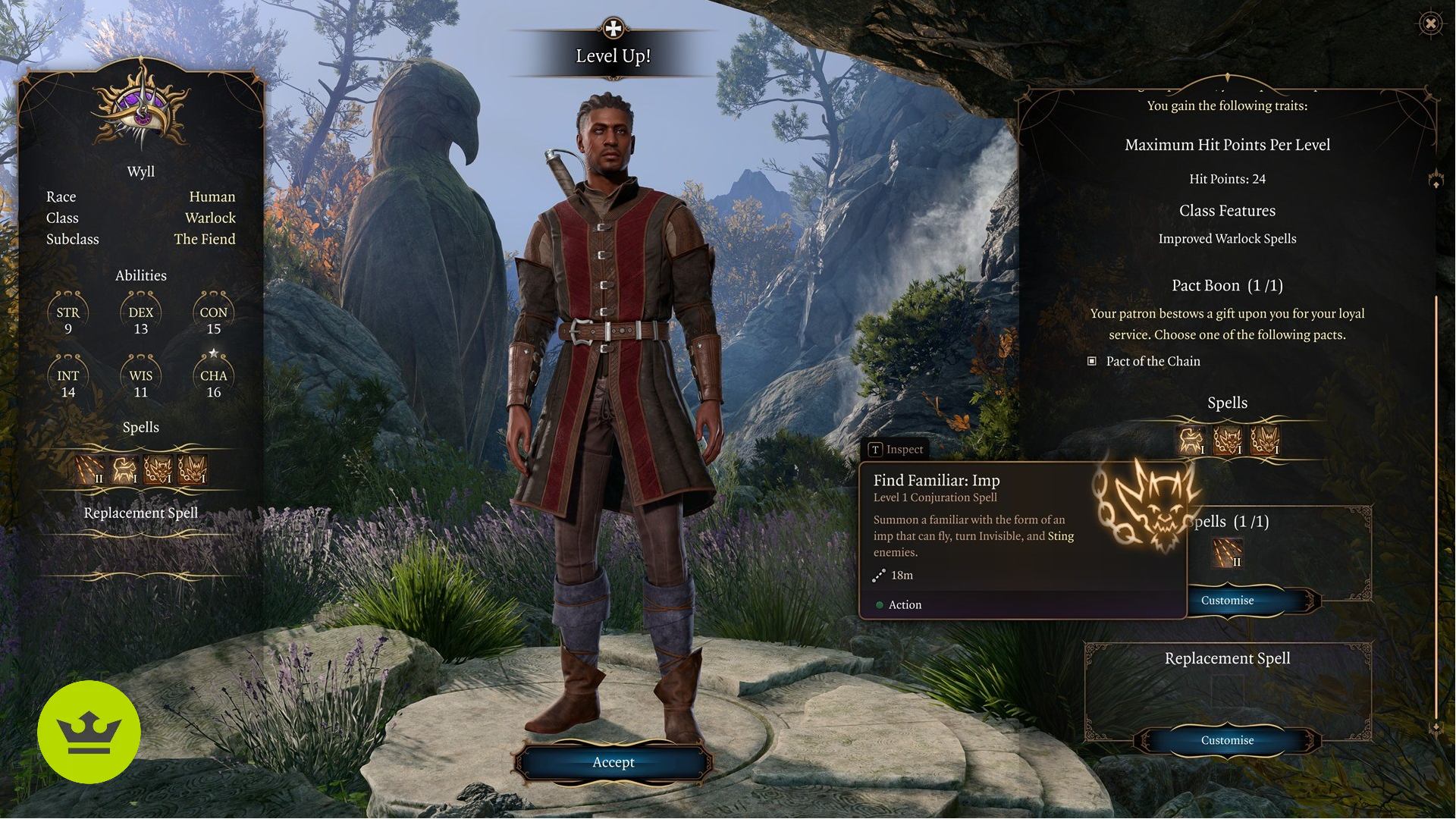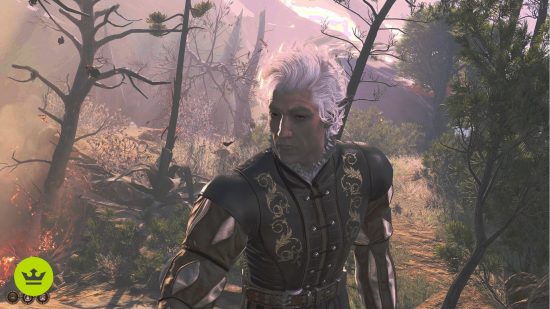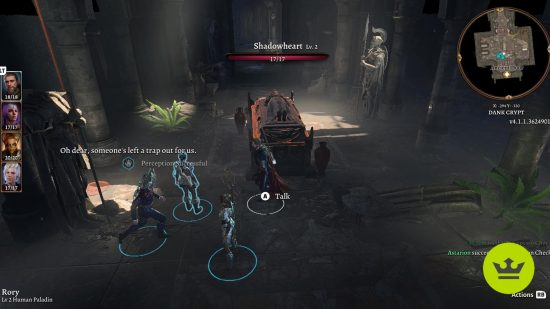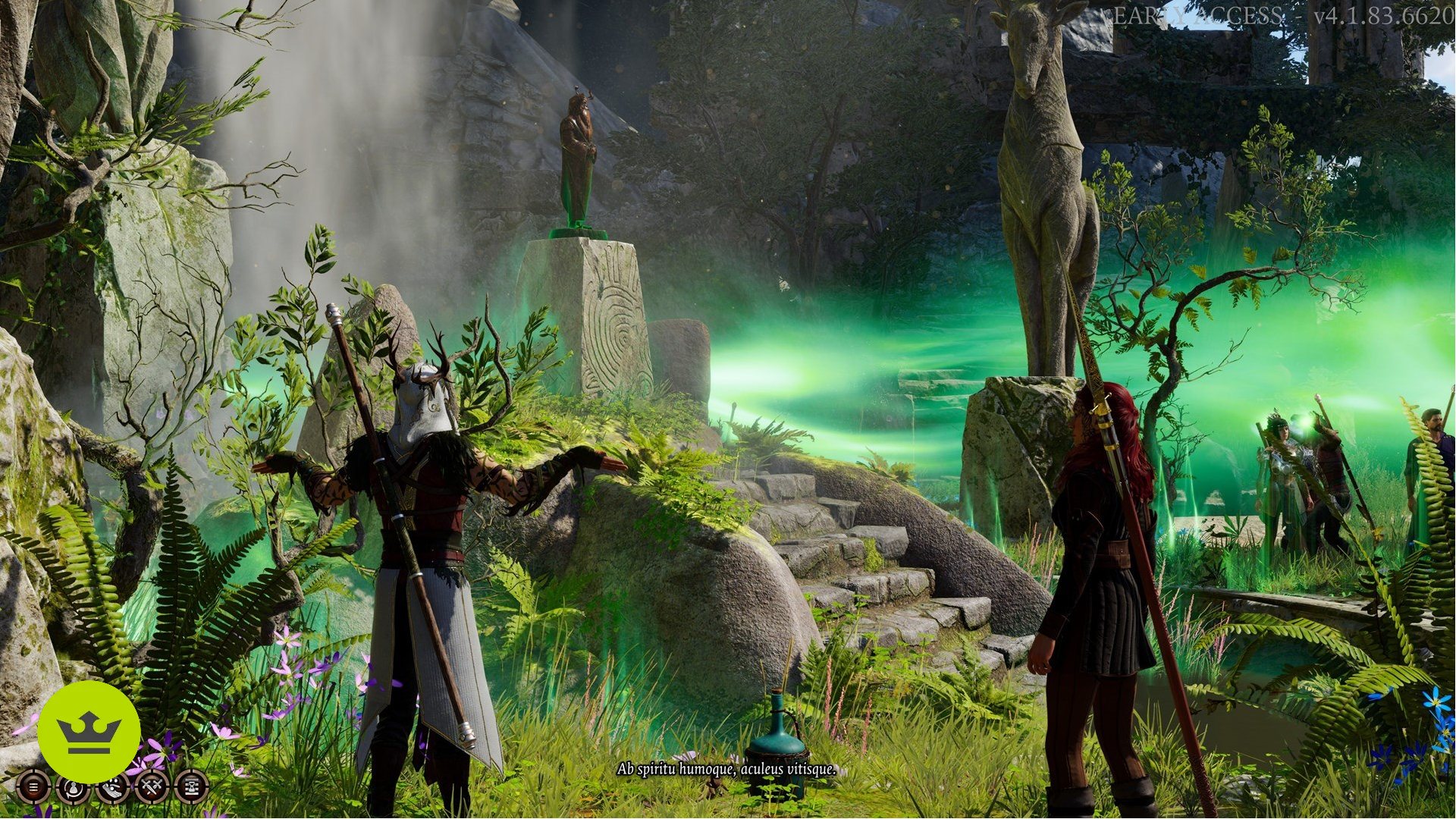What is the best BG3 class? After many, many hours of playing the game and testing various characters, we’ve come up with a handy Baldur’s Gate 3 tier list of the best BG3 classes if you are jumping in on PS5, PC, and then Xbox later down the line. After all, you don’t want to be sat in the character creator for the next hour trying to decide – there’s many, much more exciting hours yet to come in BG3! So, here is the Baldur’s Gate 3 best class choices for your playthrough and why.
Baldur’s Gate 3 features a massive campaign with numerous characters, enemies, quests, outcomes, and secrets. This expansiveness is continued with the staggering 12 Baldur’s Gate 3 classes to choose from, with a whopping total of 46 subclasses that further define them. It’s a very daunting decision to make early on as you’re in store for a very long (and incredible) adventure, so it’s easy to worry you’ve made the wrong decision. So, which should you choose, and what will give you the best gameplay experience or playstyle you’re looking for? Venturing through Baldur’s Gate for ourselves, we now have the answer in our BG3 tier list of best classes and subclasses.
Best Baldur’s Gate 3 class
The best Baldur’s Gate 3 class is the Paladin, as this class offers incredible versatility, with great damage and supportive abilities. Likewise, there’s a wide range of playstyles for this class to use in combat and while exploring, so you’re not shoehorned into one specific playstyle. It’s ideal for veterans and beginners alike.
The full BG3 tier list of classes is:
This tier list showcases which classes can function well throughout your whole playthrough. Given that you’re expected to invest a lot of time in the campaign, having a viable character from the get-go is ideal for a smooth run. While you can respec your character at any time, which is great considering the Baldur’s Gate 3 length, your party composition is a complex mesh of your character class, subclass, and race, with that of your companions.
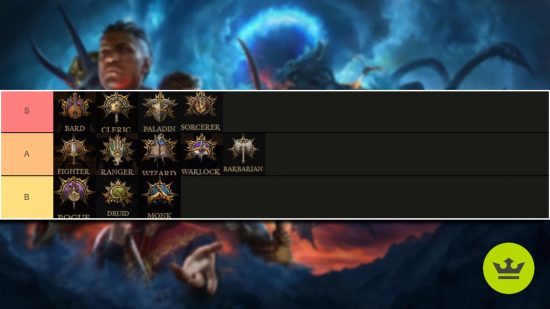
As for how we reached these conclusions, we’re played a lot and judged the best BG3 class on the following factors:
- Combat: The effectiveness of the class in combat, including defeating enemies, supporting allies, or crowd control.
- Dialogue: The effectiveness of the class in social interactions, including dialogue checks.
- Exploration: The effectiveness of the class in uncovering secrets, navigating, and scouting for the party.
No class is an expert in all these fields, but the best BG3 classes frequently feature overlap that make them highly efficient party members in a variety of situations. It’s worth remembering that you don’t need one character to be an expert at everything anyhow, as you can have up to three other companions join you, with a companion for nearly every possible class (sorry Monks, Bards, and Sorcerers).
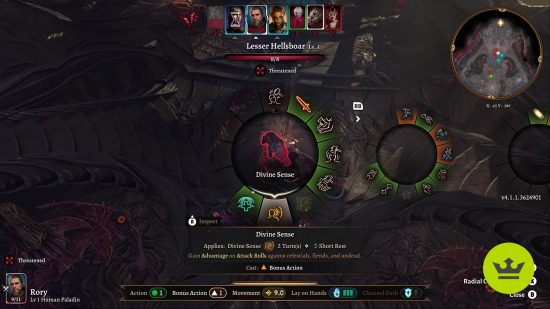
We’re also assuming that you’re taking advantage of the best Baldur’s Gate 3 build for each class, including your companions, as this also goes a long way in improving your effectiveness. This is important because, while all classes get stronger as they level up, some gain abilities that can cause them to rise up the tier list ranks later on, with new spells and attacks to use. For instance, the Barbarian can be a struggle early on, but is arguably one of the best, if not the best BG3 class in the end-game when it comes to damage thanks to its ability to perform several moves in a single turn. We note this instances where relevant.
This also makes multiclassing each class even more enticing and the decision of which class to play even more complicated, as you can technically play multiple classes with a single character. Yes, you can, in fact, multiclass with more than two classes – though you would certainly become a jack-of-all-trades, master of none at that point.
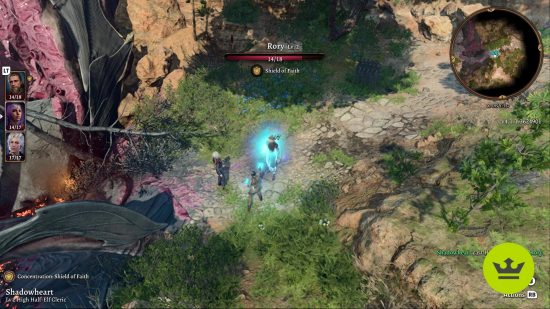
To get an idea of this in practice, while Rogue is on the lower end of the tier list, multiclassing with a Gloomstalker Ranger can drastically increase their power due to devastating first-round damage. Likewise, combining a Paladin with a Warlock can take the best Baldur’s Gate 3 class even further, with more damaging spells. Don’t worry though, we’ll go over the best multiclasses in this guide as well.
We have to note that our rankings here are based on preference, as well as the ideal subclass, race, and ability selections. Yours might be different depending on your playstyle (i.e., role-playing purposes or unique combinations). But, generally, these are the best out of the collection that will serve you very well in combat, exploration, and dialogue on any of the Baldur’s Gate 3 difficulty settings.
Baldur’s Gate 3 tier list
Here’s our in-depth analysis of each class in the Baldur’s Gate 3 tier list:
S-tier
S-tier classes in Baldur’s Gate 3 are highly integral in your playthroughs. They have spells and abilities that can truly turn the tide of battle, or skills that can let you breeze through dialogue checks.
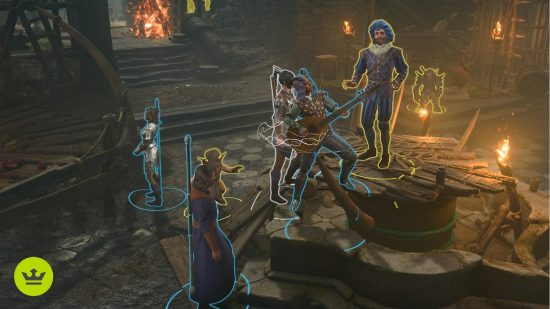
Bard
- Role: Support
- Abilities: Charisma -> Dexterity/Constitution
- Best subclass: College of Valour
- Best race: Wood/Drow Half-Elf or Asmodeus Tiefling
- Companion: N/A (none, unless Larian decides to make Volo a recruitable companion)
In terms of support classes, you can’t go wrong with a Bard. The reason for this is due to its focus on numerous skill proficiencies, allowing you to succeed in dialogue checks often. Moreover, the class has a unique action called Bardic Inspiration, which grants a bonus to an ally’s attack rolls, ability checks, and saving throws. At level 4, all charges are refreshed via short rests, ensuring that you have a nifty buff at the right time.
Though they struggle when they’re alone, the Bard thrives with allies, buffing them and setting your team up with the advantage as often as possible. With that said, there is a great damage dealer build for the Bard using the College of Swords subclass that can be absolutely devastating thanks to flourishes. It could even be argued that this specific build makes the Bard the best Baldur’s Gate 3 class to play as, especially as there’s no companion alternative.
It’s hard not to want a Bard in every team given how strong they are in combat and social interactions. It’s a shame then that there’s no Bard companion to tag along. If you want a Bard, you’ll have to play as one yourself. Unless, of course, you decide to multiclass either your own character or a companion with a Bard to gain some of the strengths of the class.
Likewise, there’s an unfortunate perception of Bards as simply supports that are all about the theatrics, though Baldur’s Gate 3 does a good job of moving away from this stereotype. While they certainly excel in a supportive role, the Bard can also be a hardened damage dealer.
Cleric
- Role: Support and healer
- Abilities: Wisdom -> Dexterity/Constitution
- Best subclass: Light
- Best race: Wood Elf or Gold Dwarf
- Companion: Shadowheart
It’s safe to say that the Cleric is one of the strongest options there is, and many would argue it’s the best BG3 class. This is primarily due to spells like Healing Word, Bless, Guiding Bolt, and Guidance. You’ve got everything you need from restoration and radiant damage to boosts to your ability checks.
Likewise, Clerics are able to use medium armor and shields, allowing them to tank a few hits and hold the frontline. As such, you’re likely to keep Shadowheart in your party for most of the campaign if you’re not playing the Cleric yourself. After all, Clerics take a top spot in the best Baldur’s Gate 3 party, so you shouldn’t leave camp without one. If you’d rather not play as one, or simply aren’t a fan of Shadowheart, then it’s a good idea to multiclass as one if it fits with your build. For example, a Cleric works wonders when multiclassed with Paladin or Sorcerer, two other superb classes that will boost the supportive and damage capabilities of the Cleric.
With the second highest number of available subclasses (trailing behind Wizard), you’re free to tailor your Cleric to almost any role in the party, amplifying tanking, support, damage, or even stealth using the Trickery Domain.
Paladin
- Role: Melee DPS, tank, and healer
- Abilities: Strength -> Charisma/Constitution
- Best subclass: Oath of the Ancients
- Best race: Zariel Tiefling, Shield Dwarf, or Wood Half-Elf
- Companion: Minthara
Compared to Clerics, Paladins are able to use heavy armor, making them even tankier. While they don’t have as many spells, they still obtain some really useful ones.
Divine Smite is the class’ bread-and-butter feature, along with various Smites that apply additional damage or effects with each hit that gives the class lots of potential for high single-target damage. Unfortunately, this does reveal the only significant downside of the Paladin – it’s lack of AoE damage. This is why we recommend pairing them with other casters like the Wizard to make up for this.
The Paladin also has access to Bless, which can empower your whole party, making them an excellent frontline choice and one of, if not the best Baldur’s Gate 3 class you can pick.
The reason why we rank the Paladin at the top of our list is because of the Oath spells, such as Oath of the Ancients and the Healing Radiance spell. This will heal your entire party upon being cast, and once more at the start of a round, making it an absolute must-have spell for tough encounters. Each subclass has access to absolutely stellar class abilities that will make the Paladin a beast on the battlefield.
The Paladin is also superb away from the battlefield thanks to its Charisma scaling that lets it shine in social situations. Because of this, they make a great leader for your party. Taking center stage in dialogue, the Paladin is able to talk your party out of bad situations and towards much more fruitful ones.
Much like the Cleric and Bard, it’s worth multiclassing with the Paladin if it works with your build. In fact, a Bard, Cleric, or Warlock multiclass with the Paladin is a great combination so you can have the best of both worlds in a single party member. However, the Paladin works well as a multiclass option for many classes, so it could be worth investing a few ranks into the Paladin even if you’re not intending to focus on this class.
Sorcerer
- Role: Caster DPS with Metamagic utility
- Abilities: Charisma -> Constitution/Dexterity
- Best subclass: Draconic Bloodline
- Best race: Wood Half-Elf, Drow Half-Elf, or Lolth-Sworn/Seldarine Drow
- Companion: N/A
We feel that the Sorcerer is the absolute best pure spellcaster class in Baldur’s Gate 3, primarily due to its Metamagic feature. By using Sorcery Points, you’ll be able to modify the effectiveness of spells and cantrips. For instance, Twinned Metamagic lets you pick two enemies to get hit by single-target spells. Likewise, there’s Quickened Metamagic, which makes a spellcast a bonus action, thereby letting you cast devastating Fireballs twice during your turn. This is great for dialling up the offensive when you’re in a good position to, especially in tricky boss fights.
Sorcerer’s also have access to many of the Baldur’s Gate 3 best spells in combat, such as Magic Missile, Chromatic Orb, Fireball, and more. So, if you’re looking to play the main damage caster for your party, then the Sorcerer is the best BG3 class for you. Scaling on Charisma, they’re also a great class to have in social situations, unlike Wizards.
It’s worth noting that, as a pure caster, Sorcerer’s don’t gain much from multiclassing, so it’s recommended you take this class as is. Unfortunately, this does mean that, if the class isn’t for you, then you’ll either have to play them anyway or miss out on such a strong class as you can’t really dip your toes into this class.
A-tier
A-tier classes are still strong in their own right, boasting unique features, abilities, and effects that can make the campaign more manageable. They also often work great as multiclass options to add even more spice to the best BG3 classes in the tier list, such as a Warlock and Paladin hybrid. It’s often their ease of use or weak early-game setups that hold them back from the top.
Fighter
- Role: Non-magic DPS (melee and ranged)
- Abilities: Strength -> Dexterity/Constitution
- Best subclass: Battle Master
- Best race: Shield Dwarf or Wood Half-Elf
- Companion: Lae’zel, Jaheira (half Fighter, half Druid)
The Fighter already shows its true potential early in the game (likely once Lae’zel hits level 2 or 3, assuming your main character didn’t pick the same class). There’s Action Surge, which gives you an extra action during your turn (i.e., two attacks). That’s followed by your choice of Manoeuvres, which grant effects to your strikes. For example, you could push or trip your foes to help control the flow of battle.
This makes them absolutely devastating in close-quarters combat, especially when you attack an enemy twice in a single turn. Getting within melee range, however, can sometimes be a challenge. Whether you open the fight from far away, there’s difficult terrain, or simply lots of enemies, you’ll have to pay close attention to how you move your Fighter. Thankfully, the Fighter has also the Second Wind ability that allows them to heal themselves during combat. Not only does this mitigate some of the issues with positioning, but it also means you can spend your valuable healing resources on other characters.
Ranger
- Role: Hybrid DPS (melee, ranged, magic, and beasts)
- Abilities: Dexterity -> Wisdom/Constitution
- Best subclass: Beast Master
- Best race: Wood Elf
- Companion: Minsc
The Ranger is a hybrid DPS class that’s able to strike opponents using melee and ranged attacks as well as magic, making them a versatile class. However, the Ranger is quite reliant of strong multiclassing options to truly shine.
While they are capable of quite strong damage early on, they are quickly outmatched by other ranged classes and melee classes in the mid-game if you’re not multiclassing. Nevertheless, they have a very unique playstyle, especially as their connections to nature give them the rare ability to speak to animals. In fact, with the Beast Master subclass, the Ranger can even summon a variety of beast companions to aid your party, akin to the Druid’s shapeshifting powers.
If you are going to play Ranger, we recommend either going all in on the nature and companion theme, or, more effectively, to take the plunge into multiclassing and using the Ranger’s kit as more of an enhancement to your playstyle.
Wizard
- Role: Caster DPS with a huge pool of spells
- Abilities: Intelligence -> Constitution/Dexterity
- Best subclass: Evocation
- Best race: Deep Gnome or High Elf
- Companion: Gale
Although we consider the Wizard as an A-tier option, it’s still one of the best BG3 class choices due to the sheer number of spells that can be learned and prepared. In fact, Wizards have access to the largest list of spells compared to all other casters. You’ll have everything from Magic Missiles and Fireball to Counterspell and Fly. Perhaps the only downside here is that Sorcerers have a better class feature in Metamagic. This can make them versatile damage dealers and crowd controllers. Bear in mind, however, that Wizards are typically glass cannons. Keep your distance and stick to high-ground to gain Advantage, otherwise you’ll quickly find yourself in need of aid.
Given you’ll be focusing on Intelligence, the Wizard can be weak in social situations and exploration, particularly when compared to Charisma characters like the Bard or tricksters like the Rogue.
If you’re not playing a Wizard, then you’ll be able to have Gale tag along in your party. With such a charming personality and interesting story, we’ve kept Gale with us for much of our journey when we’re not playing Wizard ourselves.
Warlock
- Role: Caster DPS with Familiars
- Abilities: Charisma -> Constitution/Dexterity
- Best subclass: The Fiend
- Best race: Drow Half-Elf or Asmodeus Tiefling
- Companion: Wyll
Speaking of spellcaster classes, the Warlock is still a great option. Early on, you’ll make use of Hex to debuff hostiles, making them more vulnerable to attacks. There’s also Eldritch Blast, easily the one cantrip that you’re likely to spam for hours simply due to the massive amount of damage it deals. Despite the more limited selection of magic, you’ll have access to Familiars, passives that grant boons, and the delectable ability to refresh spell slots on short rests rather than long rests.
The Warlock makes particularly great multiclass options for other classes as well, such as a Paladin, Cleric, or even Fighter. This is because you gain access to several Cantrips (Eldritch Blast in particular) that add ranged options to classes that otherwise lack them.
Scaling on Charisma, the Warlock is also a strong choice in social situations. However, remember that you’ll have to serve your Patron, and they’re not always on the same page as you are.
Overall, the Warlock is highly versatile and can work in many different situations and class setups, making them a strong contender in any Baldur’s Gate 3 tier list. However, we do ultimately recommend multiclassing with them, choosing a compatible Charisma class like the Paladin or Bard.
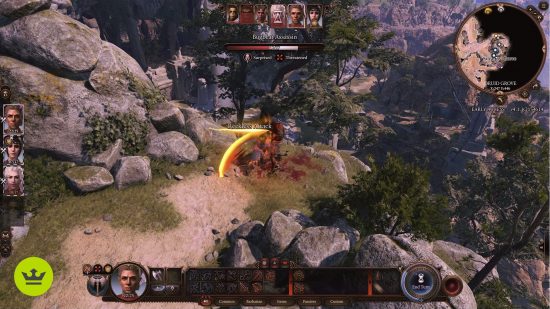
Barbarian
- Role: Melee DPS and tank
- Abilities: Strength -> Constitution
- Best subclass: Berserker
- Best race: Shield Dwarf, Githyanki, or Wood Half-Elf
- Companion: Karlach
Barbarians are absolute powerhouses in melee, although being a bit straightforward. By utilizing Rage/Frenzy, this class gains improved offense and defense. You’ll also get to use various objects or even creatures as ‘improvised weapons’, either swinging them around or tossing them at a target.
Early on, the Barbarian also gains Reckless Attack, which confers advantages to attack rolls. While enemies do gain the same advantage against you, things turn out well enough since you’ll be able to eliminate them swiftly. However, it will take a few levels for the Barbarian to really shine. Though the playstyle never really expands beyond this niche of whacking enemies as hard as you can, it’s hard to deny the pure damage capabilities of this class. The Barbarian really can carry certain encounters by themselves if you know how to play them well.
Be warned though, Barbarians are rather anti-social. While they excel in combat thanks to their Strength and Constitution rolls, this class struggles outside of combat. They’re certainly not as charming as the Bard or as sneaky as the Rogue, so the Barbarian won’t be all that helpful in dialogue or exploration unless you’re looking to intimidate others.
Thankfully, you can have the excellent Karlach join your party if you’re looking to add a Barbarian into the mix but don’t want to select this as your main character’s class. It’s hard not to enjoy Karlach’s ferocity in combat, and her story is also a very intriguing one from start to end.
B-tier
Overall, the B-tier classes don’t quite stand up to the likes of the best BG3 class and its close competitors, either lacking in flexibility, damage, or are just inferior to similar options above them in this list. So, you will want to choose something else if you’re focused on effectiveness. But if you are adamant about them, here is an overview of each and why they can still be great party members, or even multiclass options.
Rogue
- Role: Stealthy DPS that focuses on sneak attacks
- Abilities: Dexterity
- Best subclass: Assassin
- Best race: Wood Elf or Lolth-Sworn/Seldarine Drow
- Companion: Astarion
Rogues are really good, and are able to cheese most battles given their Sneak Attack capabilities, poisons, and bonus actions. The reason why we’ve placed them in this spot in our best Baldur’s Gate 3 class tier list is due to highly situational strengths. There will be moments when you’ll find yourself in combat with no time to prepare or reposition, often nullifying the benefits of planning everything while stealthed. If you can’t get the initiative, then the benefits of the Rogue are much harder to take advantage of without fumbling around a little first.
Nevertheless, the exploration opportunities offered by the Rogue are second to none, coming with lockpicking, pickpocketing, disarming traps, and generally making great scouts. This makes the Rogue a great addition to your party despite their low ranking, and certainly a great fighter if you can get the drop on the enemy.
The Rogue is also a very fun multiclass option for several other classes, including the Ranger, as you can get some alluring one-hit potential using the class-specific features.
It helps that Astarion is also such a great character with plenty of interesting story tidbits to uncover as you play whether he’s a companion or your Origin character. We love having Astarion in our party, despite how the class fares overall.
Druid
- Role: Hybrid DPS (caster and shapeshifter)
- Abilities: Wisdom -> Dexterity/Constitution
- Best subclass: Circle of the Land
- Best race: Gold Dwarf or Wood Elf
- Companion: Halsin, Jaheira (half Druid, half Fighter)
The Druid is one of the most versatile classes in the game, though it’s unfortunately a master of none.
Shapeshifting looks nice and all, but you’ll still want to cast spells. And, although there are some decent picks, such as Healing Word, Moonbeam, and Call Lightning, their overall kit pales in comparison to the three pure spellcasters. They can also be a tank for you party, but lack the tanking and crowd control potential of classes that specialize in this role.
However, the Druid – being one with nature – offers some interesting and unique avenues for exploration and role-playing that still makes them a blast to play. This includes talking to animals and plants, and it’s hard to deny that it’s a cool skill to have.
If you’re planning on playing the Druid, either go all in or look to multiclass with either the Wizard or Sorcerer to help the class gain some much needed damage.
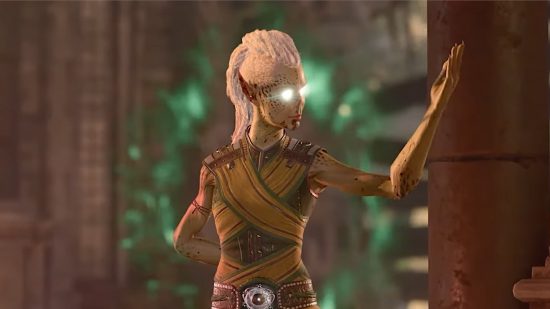
Monk
- Role: DPS
- Abilities: Dexterity, Wisdom
- Best subclass: Way of the Shadow
- Best race: Wood Elf
- Companion: N/A
Balancing stealth and close-quarters melee, the Monk is a master of manipulating the battlefield and getting the drop on your enemy with powerful attacks. Unfortunately, the Monk lacks a specialty. While they can be highly mobile, they lack the survivability of other melee classes. The spells they can have access to with subclasses like the Way of the Four Elements also pale in comparison to other spellcasters. This means that the Monk isn’t really the best at anything, and when you’ve only got four party slots to fill, that matters.
With that said, the Monk is one of the most unique and fun classes to play, so don’t let its ranking deter you. After all, BG3 is all about role-playing, and there’s lots of opportunity with the Monk.
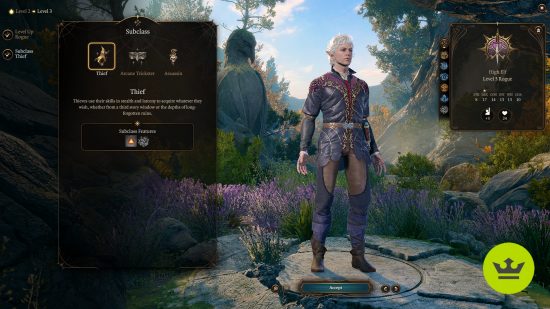
Baldur’s Gate 3 best multiclassing combinations
The best Baldur’s Gate 3 multiclassing combinations are:
- Barbarian 9/Fighter 3
- Paladin 5/Warlock 7
- Bard 6/Paladin 6
- Rogue 7/Ranger 5
- Fighter 8/Barbarian 4
While it’s not always worth multiclassing in Baldur’s Gate 3, it can drastically improve certain classes and builds. For example, Rogue can be lifted up through the ranks by taking a few levels of Gloomstalker Ranger for a massive damage increase, particularly in the first round of a fight. On the other hand, it’s even great for classes that already rank high in the tier list, such as Bard and Paladin, as you can learn the spells and unique class mechanics of each depending on when you start multiclassing.
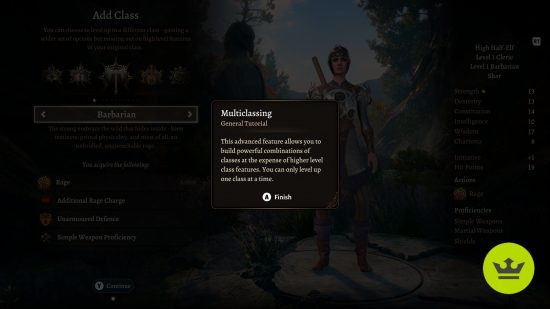
There’s absolutely tons of combinations you can use, just keep in mind whether the class you’re playing as – and the class you want to multiclass with – is a caster or martial character. Full casters like the Sorcerer will not gain much from multiclassing in general, as they don’t synergize particularly well with martial classes, and won’t gain all that much from multiclassing with other casters either. However, martial classes like the Barbarian, Fighter, Ranger, and Rogue can gain great benefits from multiclassing.
Likewise, you’ll also want to choose classes that scale on the same base stat to avoid diluting your stat distribution and lessening your overall power. For example, Paladin and Warlock are both Charisma classes, so you can safely keep putting points into Charisma to improve the power of both of these multiclass components. However, combining a Wizard and a Barbarian would require you to invest points into Intelligence and Strength respectively.

Remember, if you choose to multiclass, you’ll be losing out on levels with your original class. If your ‘home’ class, so to speak, has a unique class feature unlocked at a certain level, then you’ll have to weigh up whether it’s worth going more levels in that class before adding another into the mix. Multiclassing will, therefore, lock you out of some class features in return for the class features of another.
This is why the recommended levels in the list above look quite random from the surface, but they are tailored to make the most out of each class in the multiclass combination.
That does it for our guide to the best Baldur’s Gate 3 class and our ranked tier list. It’s safe to say there’s a lot of discourse around the best BG3 classes now that players are learning the ins and outs of each class, as well as making strong party compositions. With so much content and variety, it’s no surprise that BG3 has joined the ranks of the best RPG games and even the best games of recent years.
